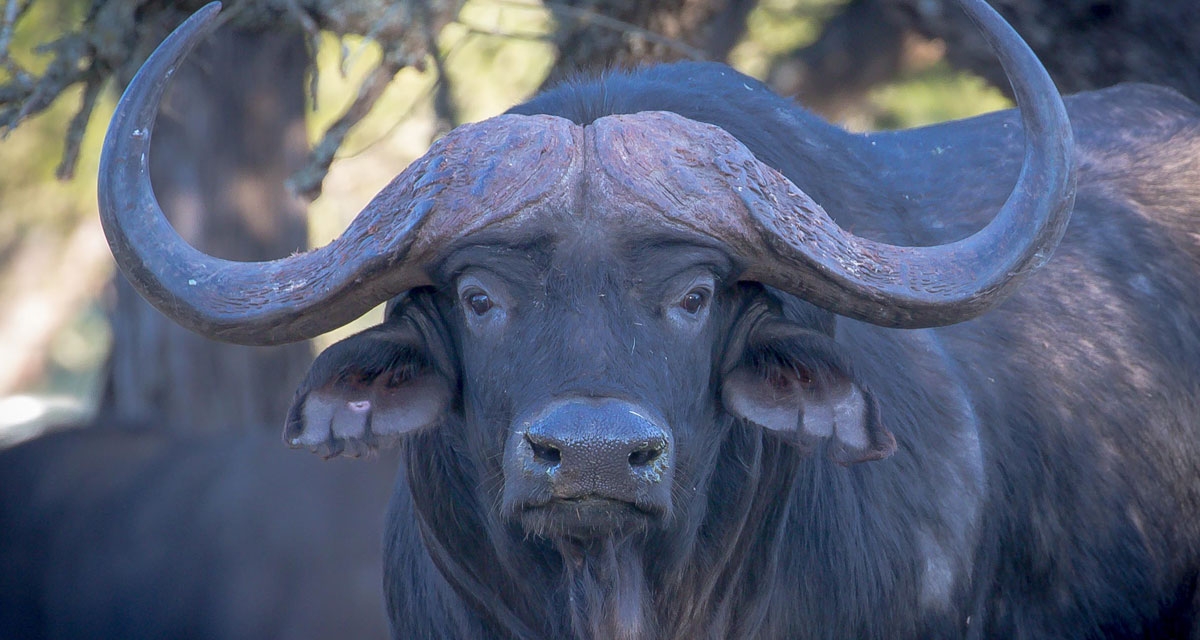Cape Buffalo

Description
The African buffalo or Cape buffalo (Syncerus caffer) is a large African bovine. It is not closely related to the slightly larger wild water buffalo of Asia and its ancestry remains unclear. Syncerus caffer caffer, the Cape buffalo, is the typical subspecies, and the largest one, found in South and East Africa. S. c. nanus (African forest buffalo) is the smallest subspecies, common in forest areas of Central and West Africa, while S. c. brachyceros is in West Africa and S. c. aequinoctialis is in the savannas of Central Africa. The adult buffalo’s horns are its characteristic feature; they have fused bases, forming a continuous bone shield across the top of the head referred to as a “boss”. They are widely regarded as very dangerous animals, as they gore and kill over 200 people every year.
The African buffalo is not an ancestor of domestic cattle and is only distantly related to other larger bovines. Owing to its unpredictable nature, which makes it highly dangerous to humans, the African buffalo has never been domesticated, unlike its Asian counterpart, the water buffalo. Other than humans, African Cape buffaloes have few predators aside from lions and large crocodiles, and are capable of defending themselves. Being a member of the big five game, the Cape buffalo is a sought-after trophy in hunting.
Conservation
While these animals are very prevalent across Africa, they are extremely rare in Texas with less than 15 private ranches owning them today.



